Apistogram: description and types, content and breeding
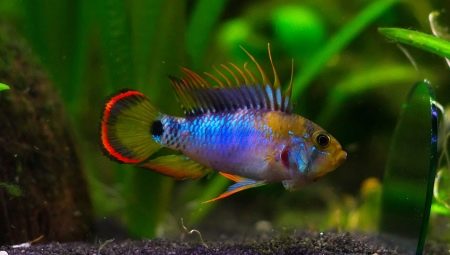
When choosing inhabitants for a small aquarium, it makes sense to turn your attention to the apistogram fish. In addition to its many attractive colors and small size, this variety is also prized for its peaceful nature.
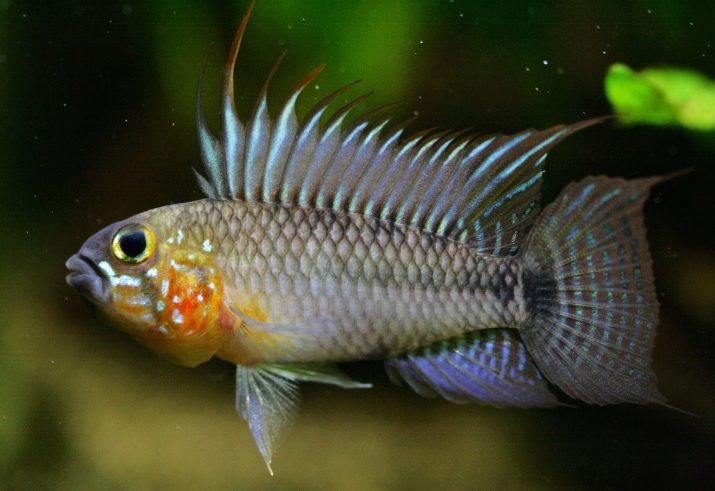
Description
Apistogram is an aquarium fish from the cichlid family. Its dimensions do not exceed 7 centimeters in length, and most often are only 5 centimeters. Such diminutiveness makes it possible to populate even a small flock in a 30-liter container. The apistogram demonstrates absolute pickiness with regard to the conditions of detention and good nature in relation to the rest of the inhabitants of the aquarium. True, such a creature does not live long - at best, 4 years. Depending on the type, the body has either an elongated oval or almost round shape. It should be immediately clear that the name apistogram unites a large number of species, each of which has its own characteristics.
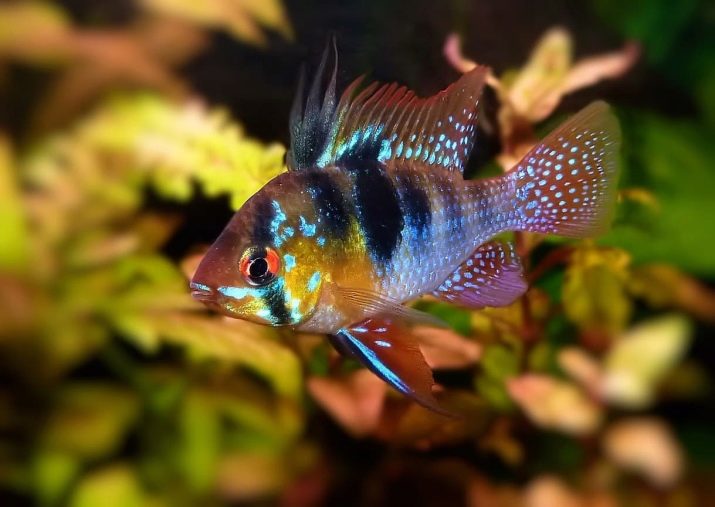
In nature, fish prefer reservoirs with a slow current and a large number of fallen leaves, algae and snags.
In this case, the water turns brown due to tannins, therefore it is advised to maintain a similar environment in the aquarium. This not only creates an optimal environment for the apistogram, but also contributes to the preservation of the brightness of the color, which in other conditions may become dimmer. By the way, although the creatures are quite friendly, inside the pack, males can treat each other quite aggressively, and even offend females during the spawning period... This explains the need for a sufficient number of shelters and grottoes in the aquariums. If the aquarium is small, it is better to create a flock of one male and at least three females.
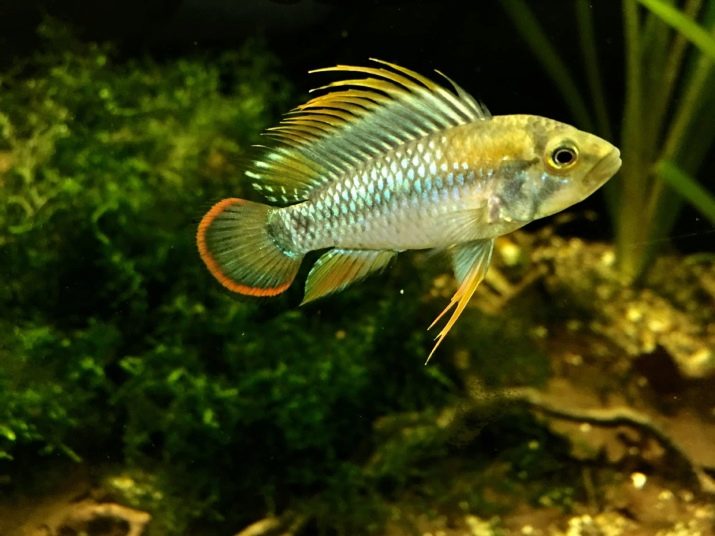
Views
The cockatoo apistogram lives for about 5 years. The size of the males reaches 9 centimeters in length, but the females do not go beyond 4-5 centimeters. The fish will fit perfectly into any aquarium with lots of plants and hiding places and clear water. It is important that the volume of the tank starts at 50 liters.
The Ramirezi Apistogram is the most famous species, also known as the butterfly. Its bright color and benevolent character make it particularly popular with aquarists. The length of the fish does not exceed 5 centimeters. Its variation is the Ramirezi apistogram balloon, which has an unusual rounded body shape. This variety is weaker than the "original", therefore it requires more accurate maintenance, the absence of temperature fluctuations and stable water indicators.
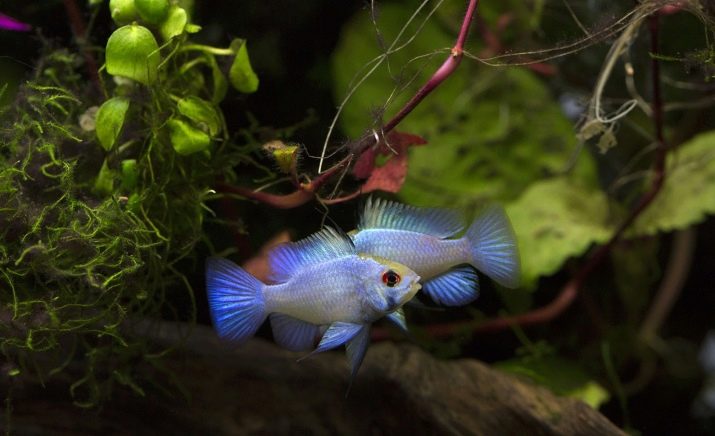
In addition to the balloon, there is a veil breed, characterized by falling fins of considerable length.
Borelli's apistogram is a beautiful representative of the cyclid, the size of which does not exceed 8 centimeters. Apistogram agassitsa is not a particularly large and completely non-aggressive fish. It is recommended to purchase it only for skilled aquarists, since caring for the creature has its own specifics. Several colors of this species have been bred by breeders: agassitsa fire red, agassitsa double red and others.
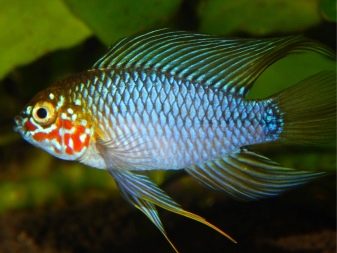

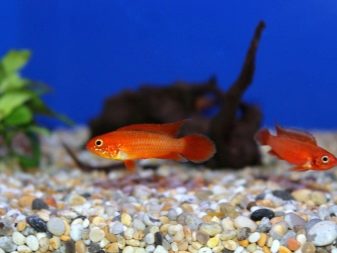
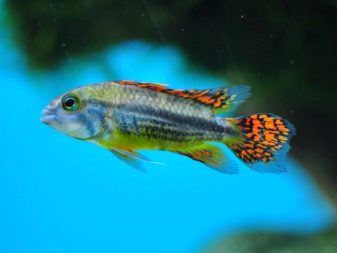
The McMaster apistogram grows up to 9 centimeters long and has different colors. It should be kept in a fairly large tank without currents and with clean water, so only professional aquarists choose a relatively complex type. Apistogram Vijita has a large number of colors, the most popular of which are gold and red widgets. The length of the fish does not exceed 8 centimeters.
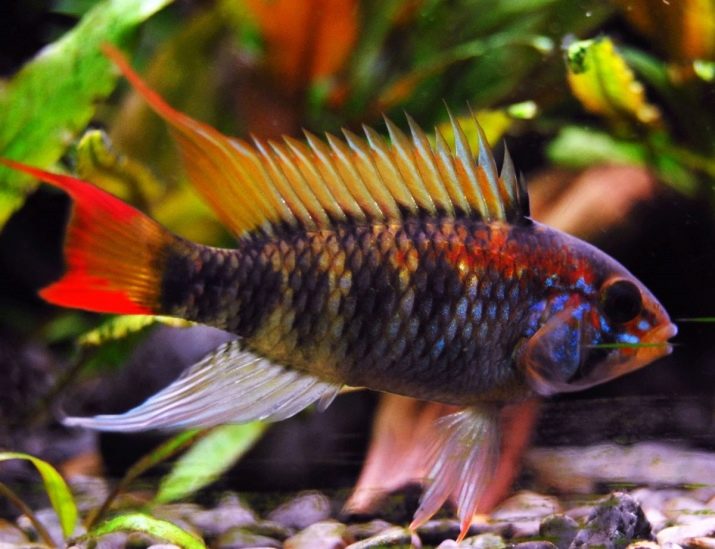
The apistogram of altispinoza, aka the Bolivian butterfly, demonstrates its bright color only under the condition of a calm habitat.
It is important to settle it either alone or with peaceful neighbors.
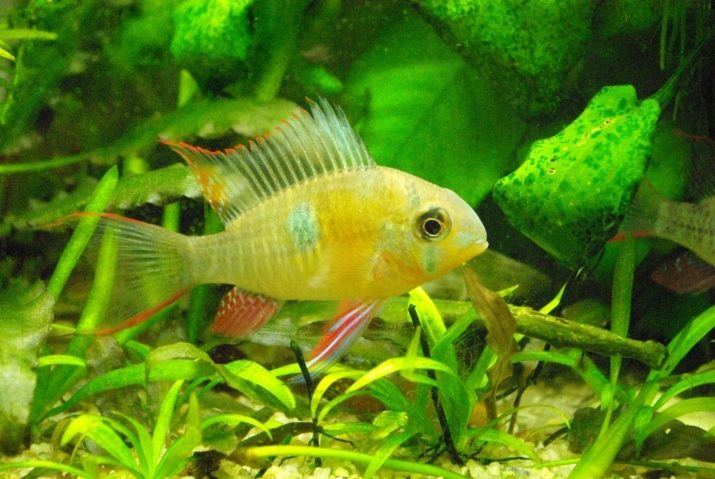
The panduro apistogram is very sensitive to the acidity of water, unlike its relatives. In addition, it requires a fairly large tank - a couple of individuals will need an aquarium with a volume of 100 liters. The length of the males does not exceed 8 centimeters, and the females barely grow to 5 centimeters in length. Outwardly, the panduro, by the way, does not look very attractive, since its main shade is gray. The males, however, have an orange stripe, but only on the tail.
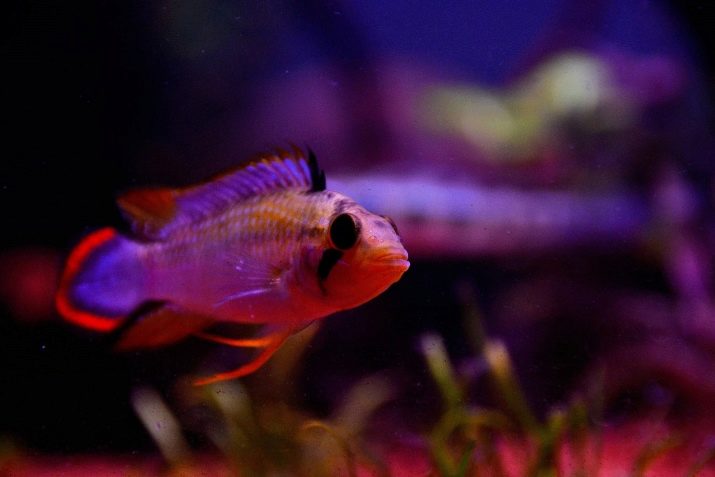
Compatibility with other fish
Peaceful apistograms live comfortably with any fish that do not show signs of aggression or increased possessiveness. Therefore, the choice can be made either based on a beautiful combination of colors, or on similar food preferences.
When populated with predators, pets themselves will be food for larger creatures.
For different varieties of apistograms, different neighbors are suitable. For example, for balloons and altispinoses, guppies and cockerels are selected for roommates, and ramirezi is settled in one aquarium with catfish or zebrafish... The cherry barbus is always considered a good roommate.

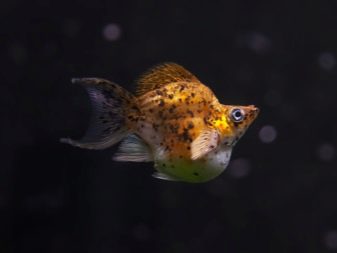
Growing conditions
The maintenance and care of apistograms cannot be called too complicated. It is better to take an aquarium of such a volume that about 20 liters of water are needed for one pair of fish. It is important to remember that if the tank is too deep, the fish will go to the lower or middle level, but the shallow depth (10 to 15 centimeters) allows them to move around the entire tank. Water should have a temperature of 20 to 25 degrees Celsius, and the acidity level should not go beyond 5.5-7.5 pH. The optimum hardness ranges from 10 to 12 dGH. In general, temperature fluctuations and changes in other indicators are not considered critical.
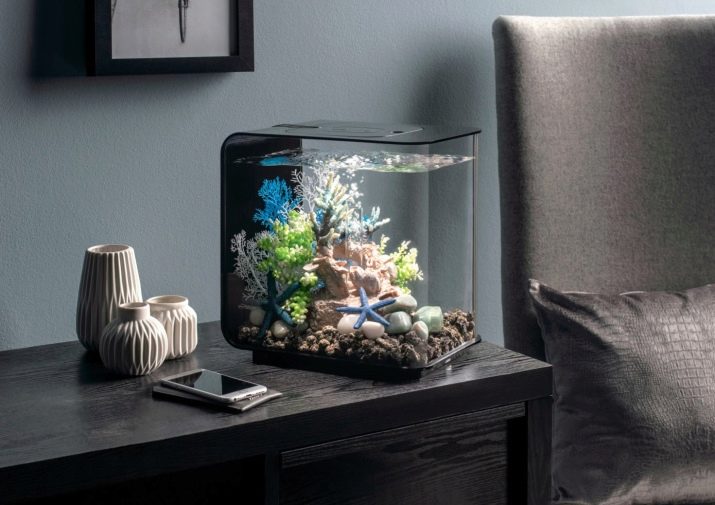
The soil can be ordinary sand or fine crumbs. Lighting is not so important, but the presence of vegetation has a beneficial effect on the condition of the inhabitants of the aquarium.
Aeration and regular water changes are very important. Experts recommend either replacing 10% of the total volume every day, or changing from 25 to 30% of the fluid every week. Since apistograms are highly sensitive to the chlorine present in the water, it is very important to defend it before pouring a new portion into the aquarium.
Placing shelters and grottoes in the aquarium, you have to make sure that their number at least slightly exceeds the number of females. It is not forbidden to keep several varieties of apistograms in one aquarium.
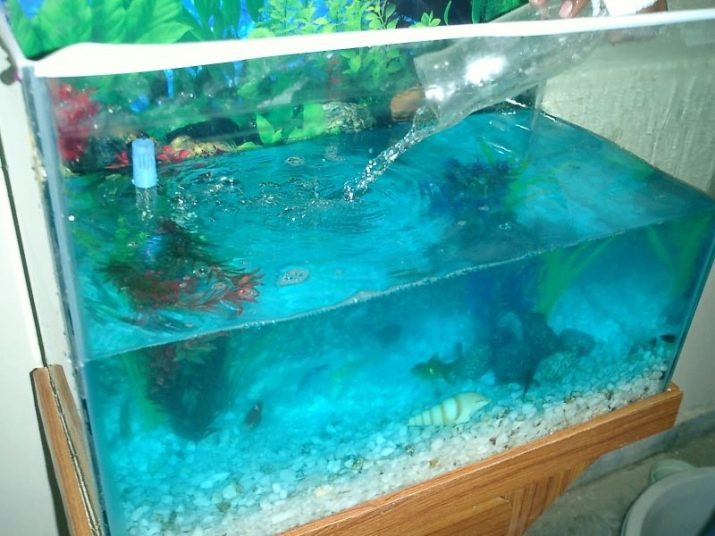
Feeding rules
Apistogram loves to eat very much and eats all the food nearby with pleasure. Therefore, it is important to control the size of their portions, as overeating leads to problems with the gastrointestinal tract, which turn into serious illness. Feed the fish twice a day in equal, small portions. The apistogram is considered omnivorous, and therefore the best solution would be to offer her a combination of different foods. The pet's diet should contain plant-based ingredients such as healthy seaweed, minced seafood, frozen insects and microorganisms, as well as live tubifex and bloodworms.

Large pieces should first be crushed, and live food should be treated with a solution of potassium permanganate.
From time to time, it is not forbidden to use ready-made formulations, composed in such a way that they include all the necessary vitamins and minerals. Some of them are designed to brighten the color and increase the activity of the creature. If you compose the diet of the apistogram properly, then it is easy to provoke its growth and development - in about 6 months its size will increase several times.
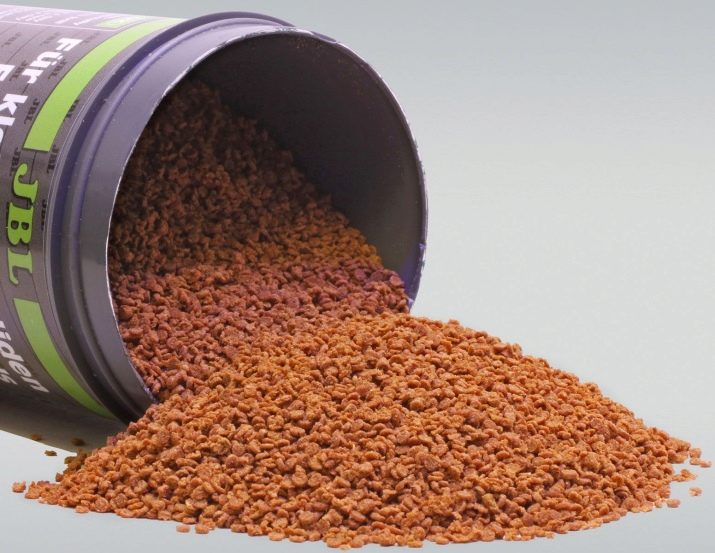
Sex differences and reproduction
Breeding apistograms at home seems to be a rather interesting process. In some species, full-fledged pairs are formed, which are engaged not only in reproduction, but also in joint care of the offspring. It is considered correct when mating occurs without the intervention of the owners, which means that initially it is worth purchasing a flock of fish. The spawning period occurs from March to October. The female lays about 150 eggs, for which she definitely needs a flat surface.
It is recommended to increase the temperature in the aquarium at this time to the level of 25-28 degrees Celsius, and also make sure that the acidity level is in the range from 6.5 to 6.8.
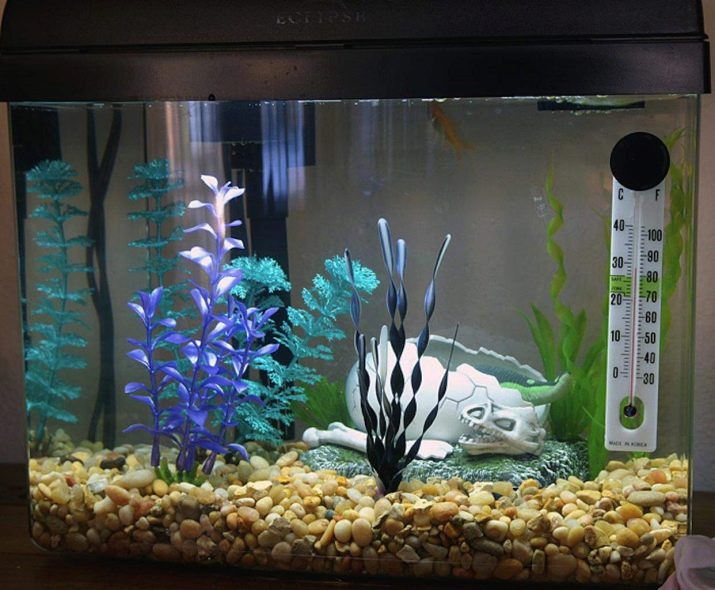
The development of fry is not too long - in order for the eggs to transform into full-fledged fish, it will take a maximum of a couple of weeks. First, the fry feed on what is contained in the yolk sacs, and then they need microworms, chopped brine shrimp or specially selected food. The male at this time is actively caring for the offspring. While the fish are developing, you should maintain a favorable aquarium environment and avoid any stressful situations.
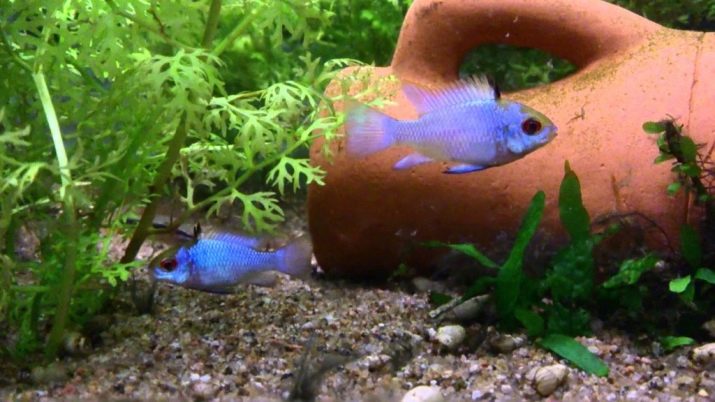
Possible problems
By themselves, apistograms have fairly stable health, so all problems with them are the result of improper care or non-compliance with the conditions of detention. True, we are talking about natural varieties, since those living in a natural individual are much weaker and react negatively to a change in any indicators of water: temperature, hardness, composition or acid-base balance.
Problems with the gastrointestinal tract occur either due to gluttony of apistograms, or due to non-disinfected live food.
Quite often, apistograms get sick with hexamitosis caused by a particular parasite. It is easy to determine the disease by refusing to eat a pet, a darkened color and a visual change in the state of the abdomen. The sick fish will have to be removed to another container for quarantine. The water temperature in it should gradually rise to 34-35 degrees, and the water should be supplemented with furazolidone.
For the apistogram, see below.








